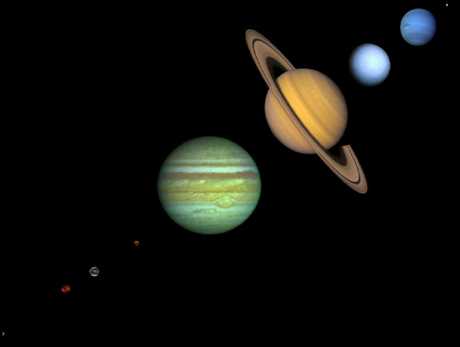 Introduction to
Introduction to For the medieval astronomer the Universe was a small place, the Earth was the center, and events seen in the sky were assumed to be orderly and designed to benefit humanity. The only changes that were viewed appropriate were cyclic changes such as the (mostly) orderly motion of the planets on the sky or the daily travel of the sun around the heavens, for cyclic change returns one to the starting point and so is not really change at all. In Europe of the Middle Ages this belief was elevated to the level of religious dogma, and one dared challenge this worldview at considerable personal peril.
However, the Copernican revolution began a long process that changed completely
our perception of the Universe and humanity's place in it.
Beginning in the 16th and 17th centuries and continuing until today,
scientific observations and theoretical understanding
have demonstrated that
the Universe is enormous, that it has existed for periods that dwarf human
lifetimes, and that we do not occupy its center (there is no center)
.
Probably less appreciated is a change
with antecedents in events observed hundreds of years ago, but that
has accelerated at breathtaking pace
over the last 30 years. As observational astronomy at
wavelengths other than visible light (Radio-Frequency,
X-Ray, Gamma-Ray, Ultraviolet, ...)
has become more commonplace, we have begun to appreciate that the Universe is
party to scenes of unimaginable violence.
Far from an orderly
stage for stately and gentle physical processes, the Universe at various times
and various places undergoes violent cataclysms releasing energy
on mind boggling scales
We are in fact made up of stardust from exploded stars.
We will study how this modern worldview has come about, and survey what we have learned about the Universe, and in particular the solar system, from observational and theoretical discoveries.